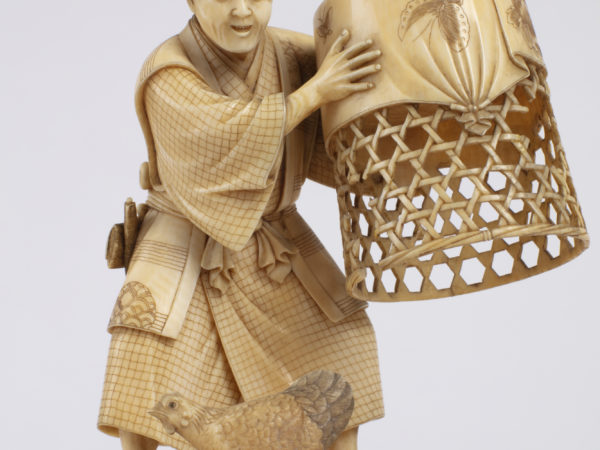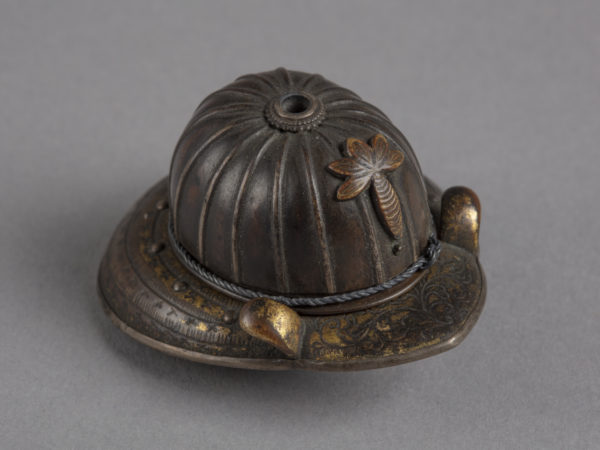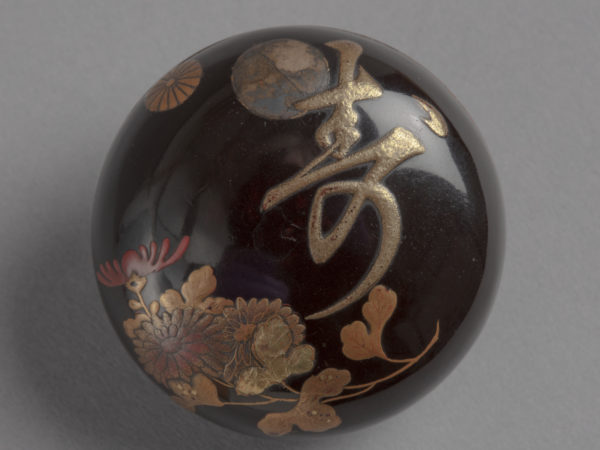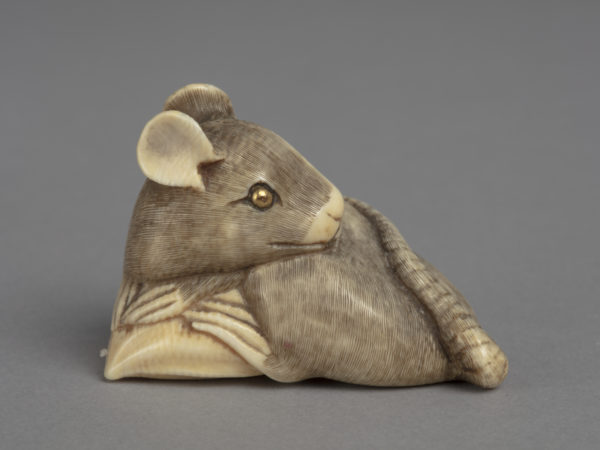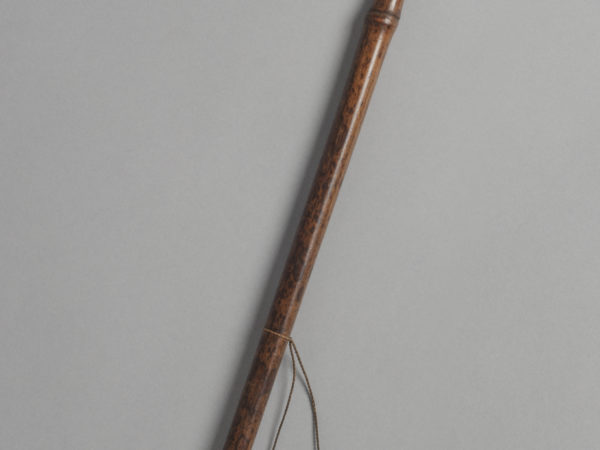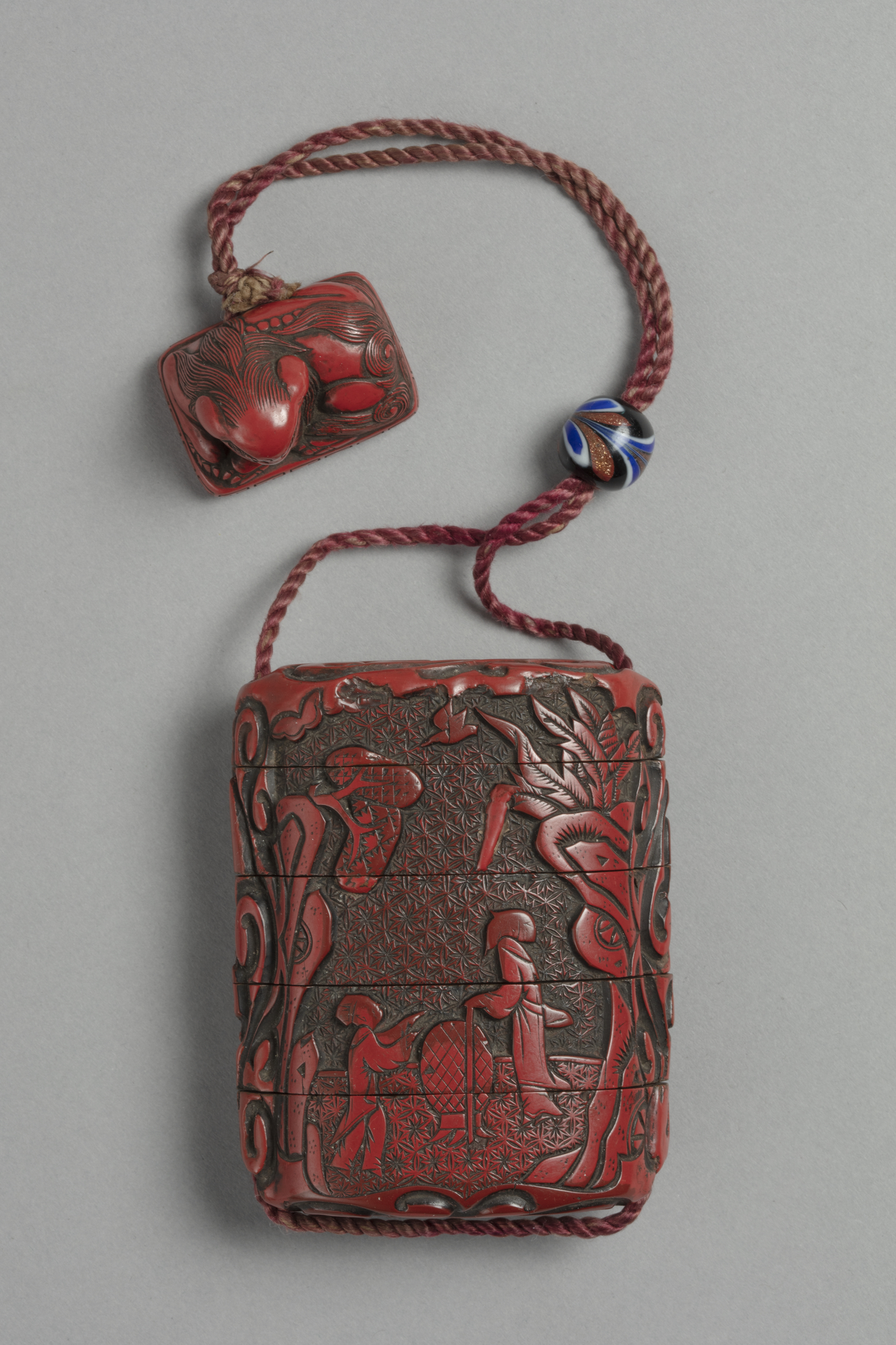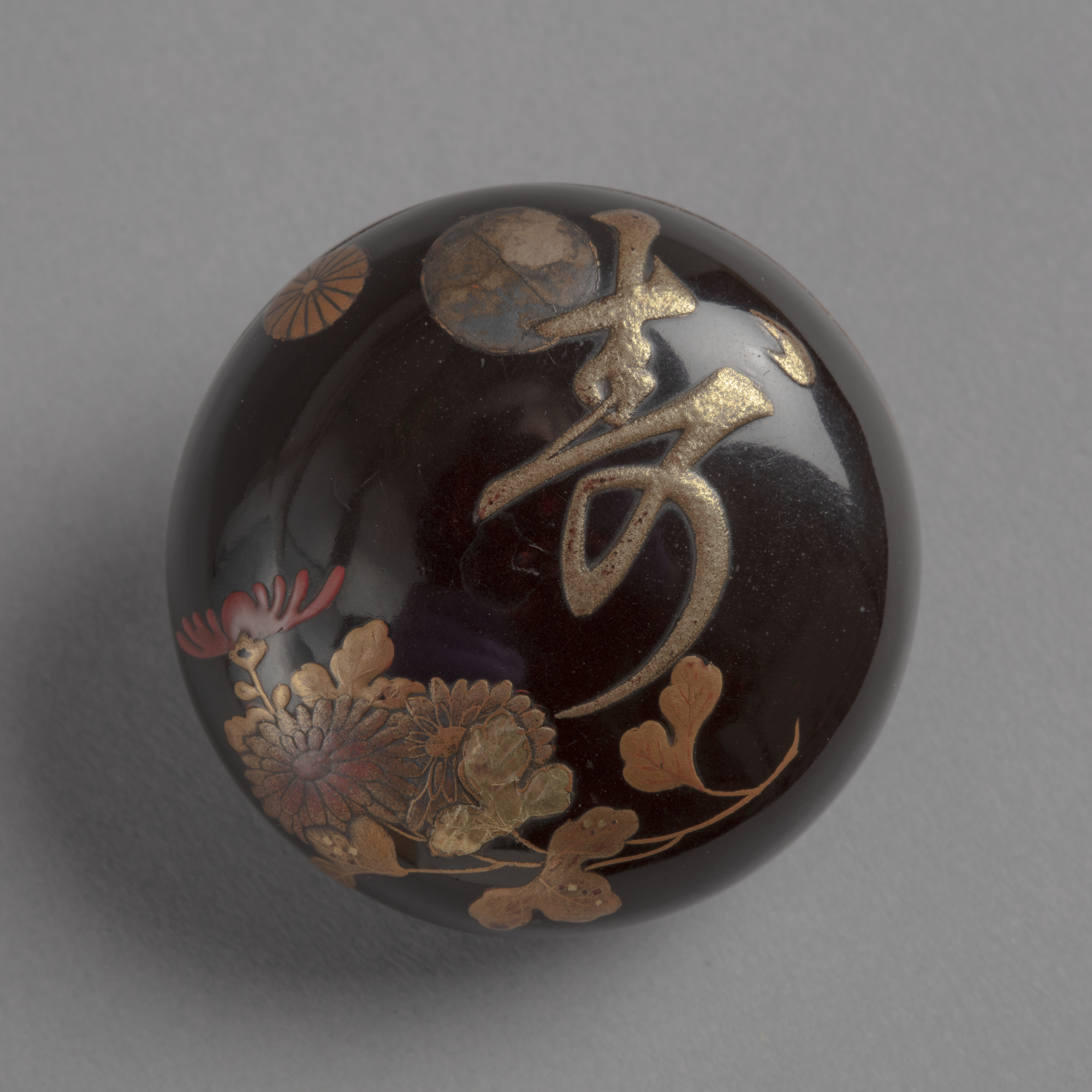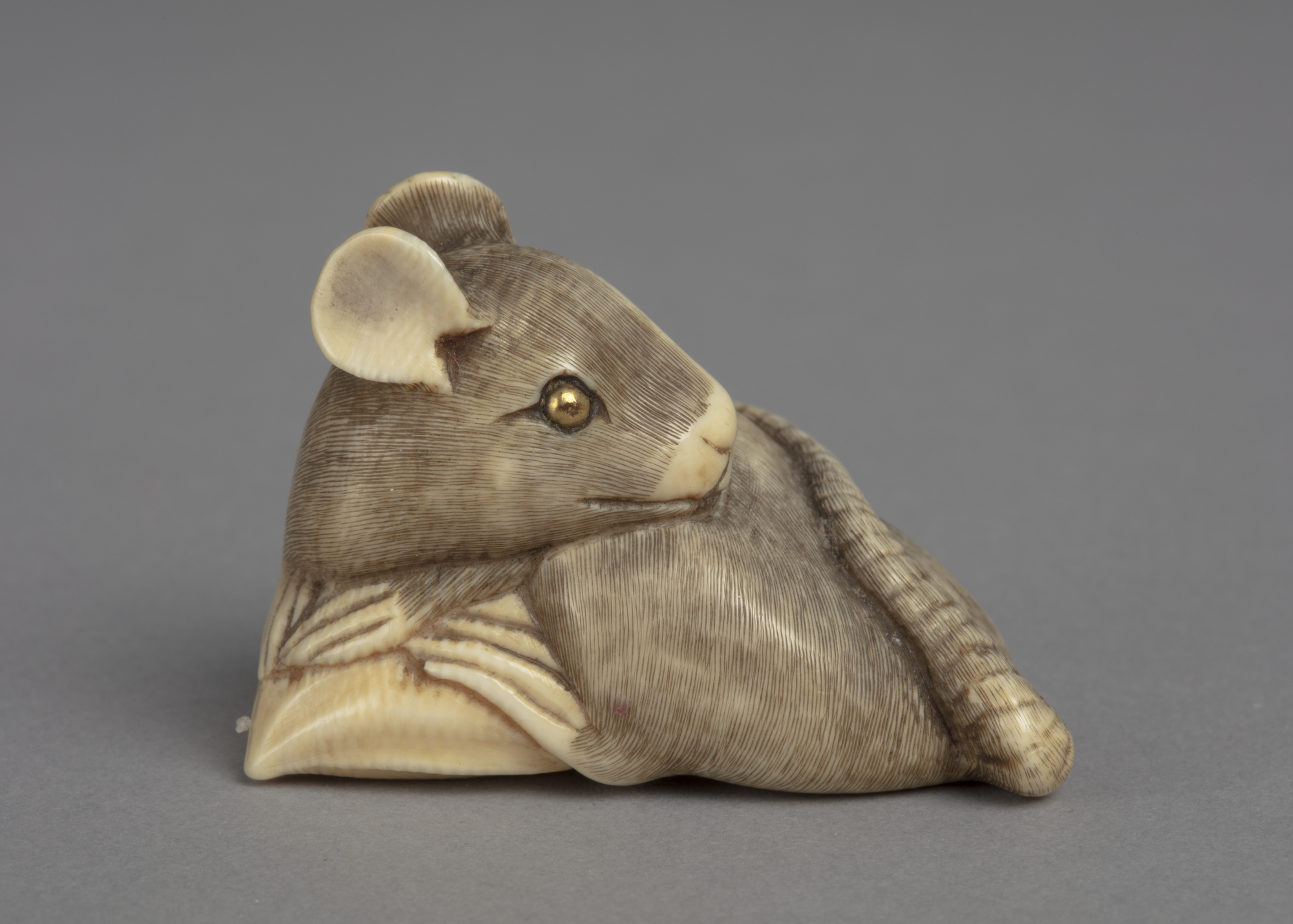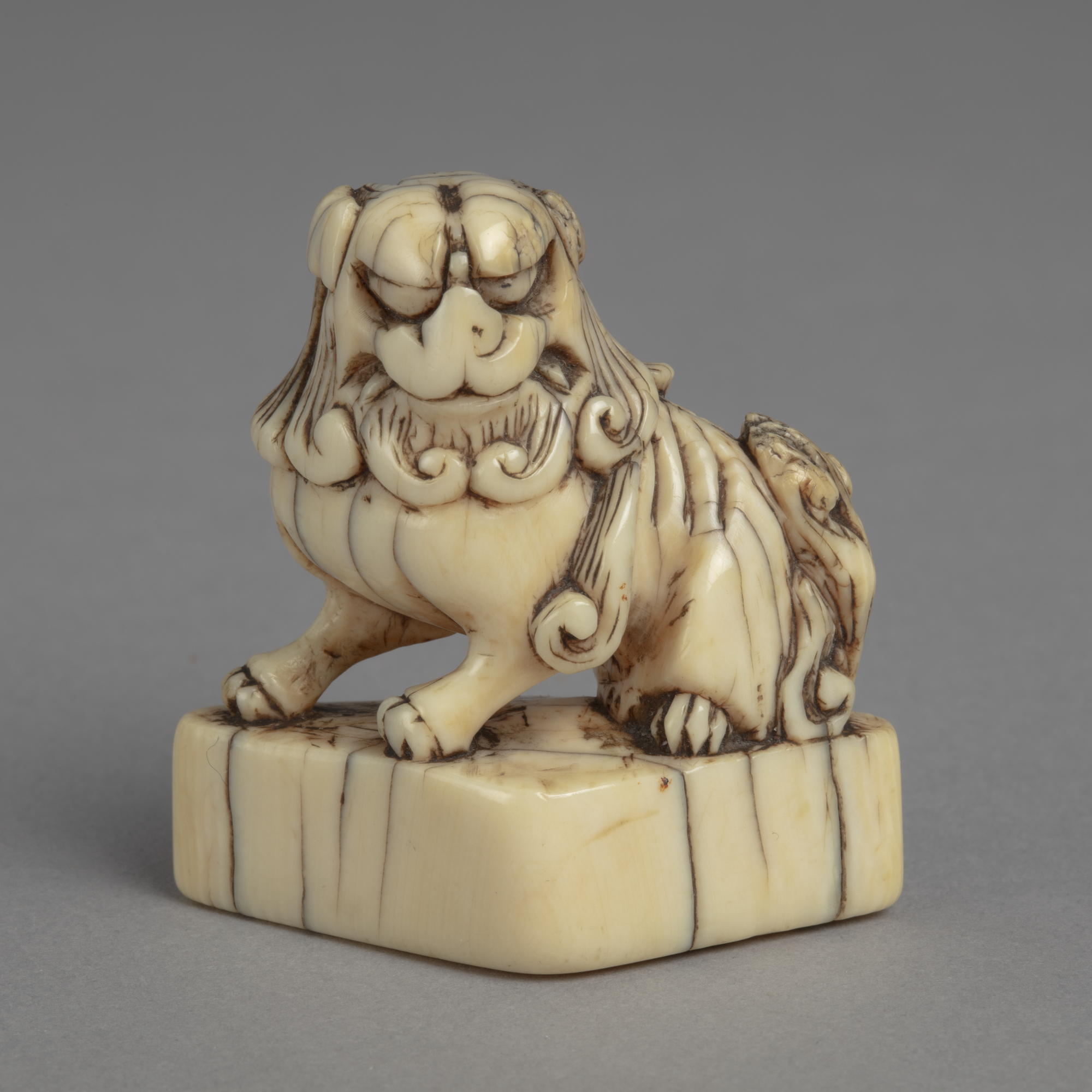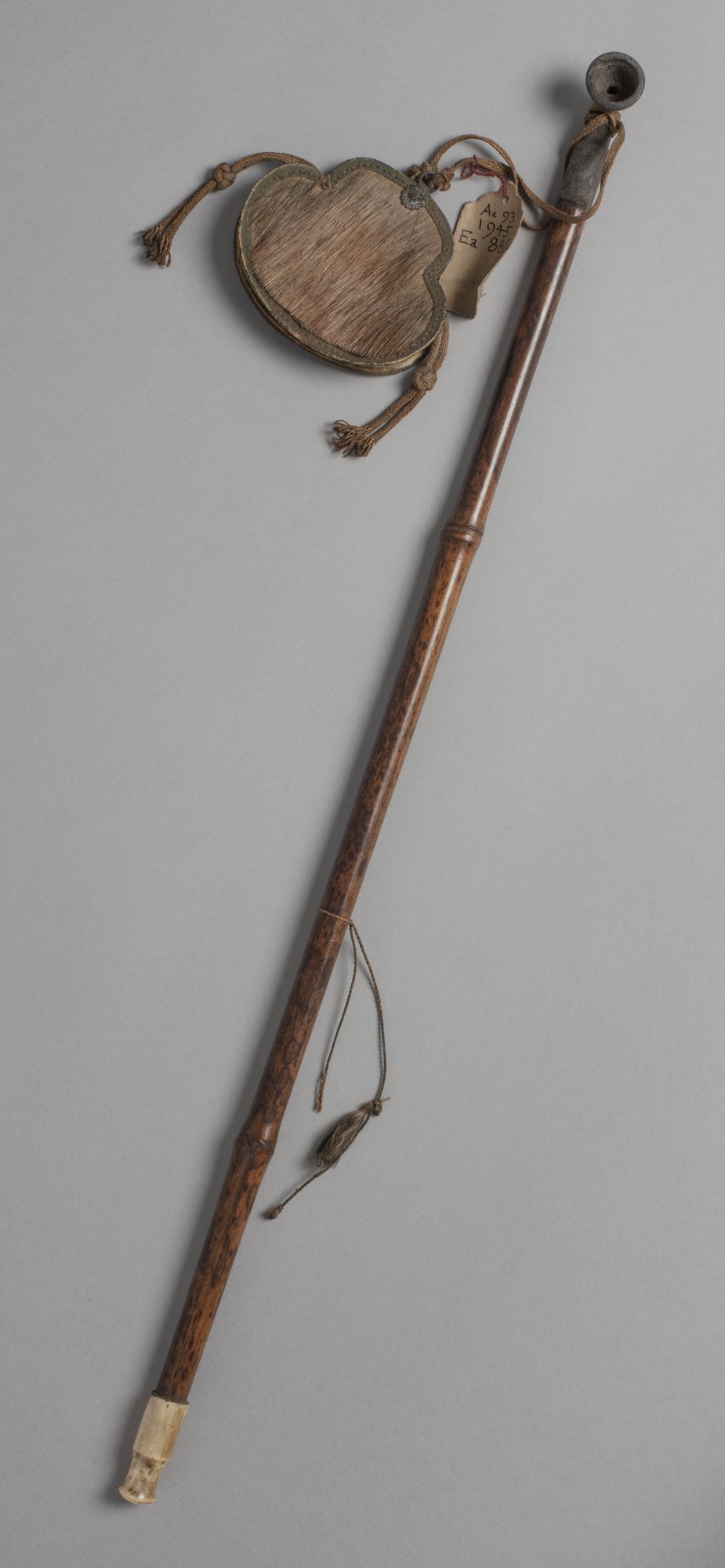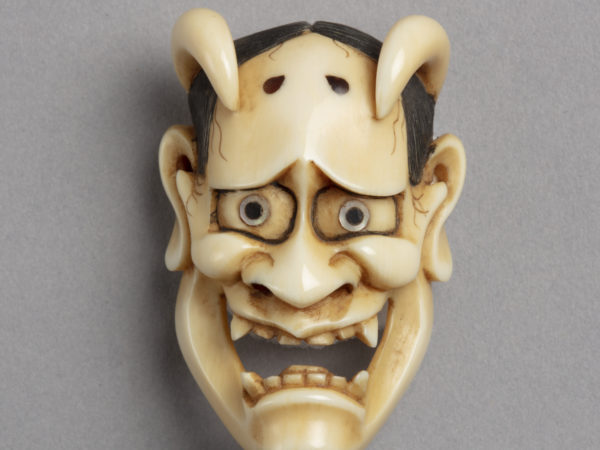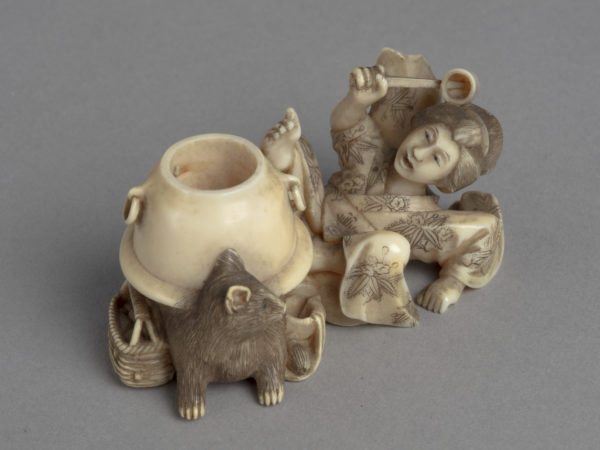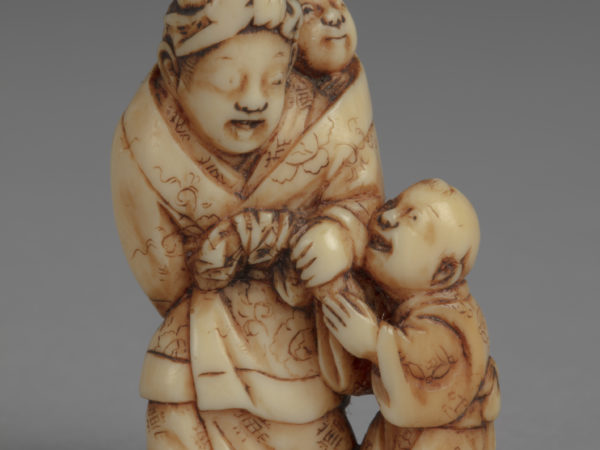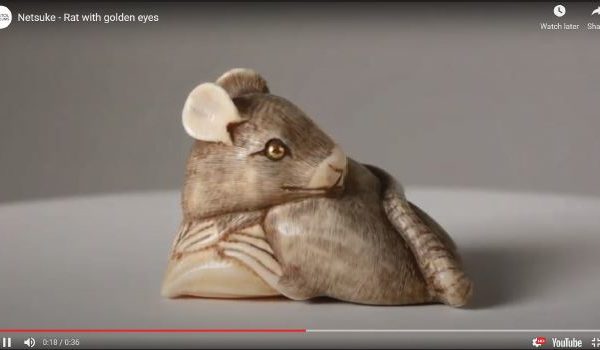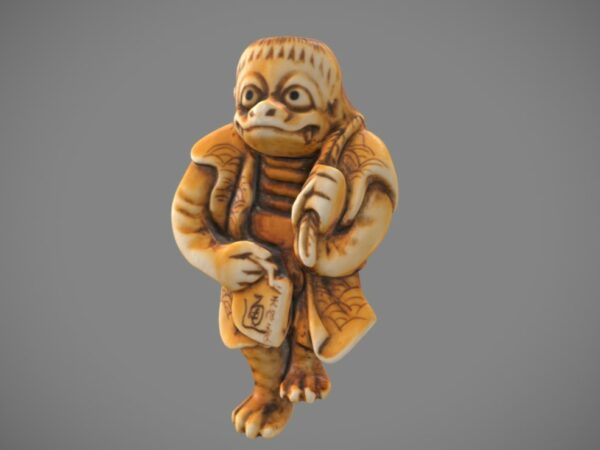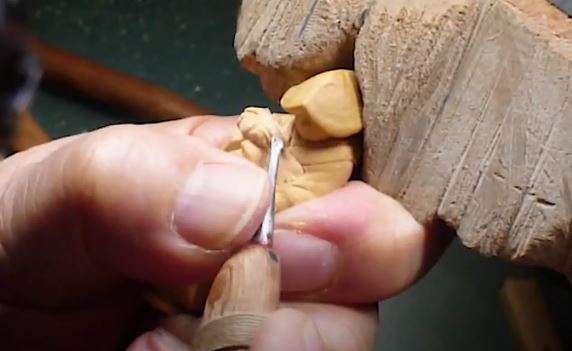Bristol Museum & Art Gallery
Netsuke: Miniature masterpieces from Japan
Bristol Museum & Art Gallery has a collection of over 200 Japanese netsuke, small carvings mainly used by men to attach items to their belts.
Created in the 1700s and 1800s, each netsuke is unique. They depict a huge range of subjects from Japanese popular culture. 75 of these tiny masterpieces from our collection are featured in this exhibition.
With special thanks to our wonderful donors for their support, without whom this display would not have been possible: Bristol Museums Development Trust, The Japan Society and Simon Baker.
With special thanks to Amy Raphael, Max Rutherston, Princess Takamado, Ryūshi Komada & Makiko Komada.
Introduction
Traditional Japanese clothing did not have pockets. Men used pieces of carved wood or ivory called netsuke to hang small personal items from the sashes around their waists.
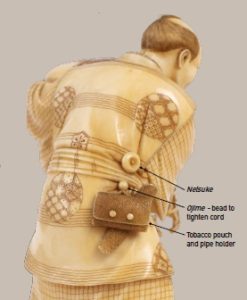 Tobacco pipes, pouches and decorative containers called inrō were attached to netsuke with cords.
Tobacco pipes, pouches and decorative containers called inrō were attached to netsuke with cords.
The earliest netsuke (‘root-fix’ in Japanese) were probably simple knobbly roots. Then craftsmen began to make intricate carvings from wood, ivory and other materials.
During the Edo period (1603-1868) the military government passed strict laws governing what people wore. A wealthy merchant could show his taste in a subtle way by wearing a tiny, beautifully carved netsuke and not get into trouble.
A fine netsuke could take one or two months to make.
The craftsmen would use different tools such as saws, chisels, knives, and drills to shape the carvings, then sand and polish them. Sometimes makers carved their names on their work.
Craftsmen often inlayed one material into another. Many netsuke were stained with ink to highlight finely carved details.

Ryūshi Komada, Master carver of netsuke and okimono, Tokyo. © Ryūshi and Makiko Komada



